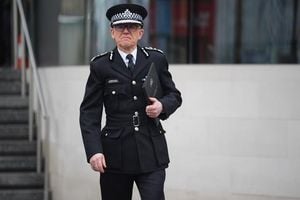Biking is the new transportation revolution underway in Paris. This is good news for visitors, as I learned during a week of rediscovering my former hometown by bike. Over the past five years, the city’s dynamic mayor, Anne Hidalgo, has sparked a green transformation by adding more than 600 miles of dedicated cycling paths, installing over 21,000 Vélib’ city bikes, and implementing draconian limits on car traffic. That means it’s easier than ever to enjoy the ride. Notably, several key transportation arteries—like the Rue de Rivoli, which runs from east to west and passes the Louvre—have been modified for bicycles. Parisians are ditching their cars for bikes, according to a recent study. As I joined the stream of commuters along the Seine and past the bike-o-meter outside of the Paris Hotel de Ville (city hall) one evening, I watched the LED number flicker and count me as the 7,347th biker for the day. It’s a new Paris, especially for residents and visitors on two wheels.
How to organize your own cycling “Tour de Paris” Step one: Get your own bicycle For maximum peace of mind and flexibility (and to avoid full docking stations and wonky Vélib’ bike share steeds), it’s best to rent a bike, according to Pierre Olivier Martin-Bobin, who co-founded PASTEL Cycles. He recommends a foldable city bike, like a Brompton, that you can leave at a museum or restaurant coat check. There’s also another perk for this type of bike. “You can bring it into your hotel or Airbnb at night, so you don’t have to worry about theft,” he says. Travelers can also stay at a hotel that provides guests with bikes. American Christina Greveldinger and her French husband own the charming Hôtel de la Porte Dorée—one of nearly 20 Paris hotels that have earned the national “Accueil Vélo” bike-friendly label. Avid biker Greveldinger provides a bike storage space for guests in her vintage building’s courtyard or basement. Her fleet of six semi-electric bikes, home-away-from-home vibe, and organic breakfast buffet fit the bill for a casual biker. Visitors to the City of Lights also have access to electric bike share. Thirty-year-old Louise Frion uses Lime bikes to commute to her job near the Champs Elysees. “That way I avoid the strikes, dirt, and crowds on the metro,” she says.
Step two: Plan your itinerary First-time visitors may want to take a group tour to familiarize themselves with the lay of the land. For information on bike tours and safety, bike maps, bike cafes, and the bike share system, check out the city’s “Paris by Bike” page. Bikers can also use Komoot or Google Maps to plan itineraries and turn on the audio feature while riding so they can use their earbuds for directions without looking at their phone. Cyclists can also follow these four self-guided bike itineraries, which cover most of the city.
Step three: Time your visit well On Friday evenings and Sunday mornings, Paris Rando Velo, a local nonprofit, organizes free guided group rides that leave from the Hotel de Ville. On Sundays and holidays, many Paris streets, including the expressway along the Seine, are closed to cars, thanks to the city’s Paris Respire initiative. For an offbeat way to experience France’s bike culture and have fun, try visiting during the annual “May by Bike” festivities. The country celebrates “the little queen” (French slang for bicycle) and the arrival of spring with thousands of local events like bike rides, workshops, and performances along the canals of Paris. Cyclists from around the world also gather for the two major annual bike races. The Paris-Nice departs from the Paris region and ends in the capital of the Cote d’Azur. And of course, the arrival of the emblematic Tour de France, where fans line the roads to watch racers stream into town along the Seine and up the Champs-Elysées to the finish line at the Arc de Triumph.
Step four: Head south and north My best biking moments occurred among the daily fresh markets, greenways, canals, cafes, and quiet side streets of Paris’ eastern and northern neighborhoods, where traffic seemed less chaotic, and many roads better suited to protected cycling paths. For example, in Paris’ first “bike street” (located in the 12th arrondissement), Rue Charenton is lined with local shops, restaurants, and cafes and runs for nearly two miles between Place de la Bastille and Place Félix Éboué. I fueled up with coffee and chatted with my tablemates at chill Casa Cafe, owned by an American-Brazilian-Spanish trio.
The rules of the road Paris is not as bike-friendly as Amsterdam yet; so, Jean Jacques, my distant relative who works as a taxi driver in Paris, offers some advice. Cyclists should always be aware of their surroundings. “Just be careful,” he says, “because a lot of cyclists don’t follow the rules of the road.” That combined with the aggressive drivers in large cities can make for an explosive mix. Until Paris’ bike path system is fully developed—and rules of the road are ingrained and enforced for both drivers and bikers—slow cycling is the key to Parisian joie de vivre on two wheels. Paris by bike is an ideal way to immerse yourself in the City of Light. It’s also the ultimate way to see the untouristed or lesser-known parts of the city while burning off those croissant calories.
Ceil Miller Bouchet is an Iowa- and France-based writer who specializes in wine and food. Follow her on Instagram.




